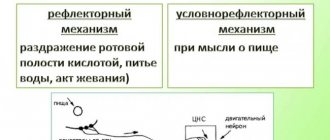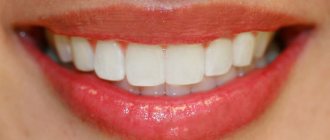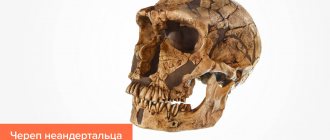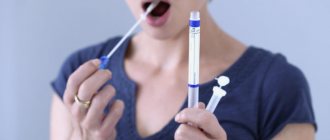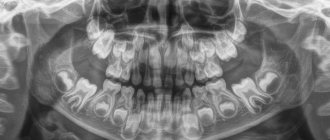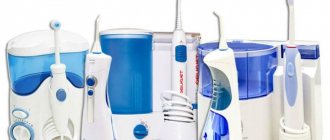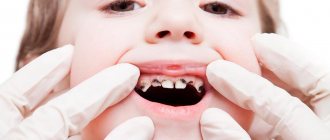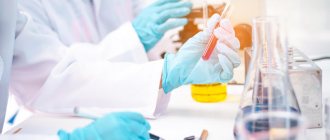We swallow saliva regularly. And we are accustomed to the fact that the oral cavity is always wet and we perceive the cessation of sufficient production of this biological fluid with suspicion. As a rule, increased dry mouth is a sign of some disease.
Saliva is a common and necessary biologically active liquid. Helps maintain the level of immune defense in the oral cavity and digestion of food. What is the composition of human saliva, fluid production rates, as well as physical and chemical properties?
A little biology
Saliva is a biological substance secreted by the salivary glands. Liquid is produced by 6 large glands - submandibular, parotid, sublingual - and many small ones located in the oral cavity. Up to 2.5 liters of fluid are released per day.
The composition of the secretions of the salivary glands differs from the composition of the fluid in the oral cavity. This is due to the presence of food debris and the presence of microorganisms.
Functions of biological fluid:
- wetting the food bolus;
- disinfectant;
- protective;
- promotes articulation and swallowing of food bolus;
- breakdown of carbohydrates in the oral cavity;
- transport - the liquid wets the epithelium of the oral cavity and participates in the exchange of substances between saliva and the oral mucosa.
Mechanism of saliva production
Function [edit]
Further information: Digestion
| This section needs expansion . |
The salivary glands produce saliva, which has many benefits for your mouth and overall health. These benefits include:
- Protection
Saliva is composed of proteins (such as mucins) that lubricate and protect both the soft and hard tissues of the mouth. Mucins are the main organic constituents of mucus, a mucous viscoelastic material that covers all surfaces of the mucous membrane. [23]
- Buffering
In general, the higher the saliva flow rate, the faster the cleansing and the higher the buffer capacity, hence the better protection against caries. Therefore, in individuals with a lower salivary secretion rate combined with a low buffering capacity, salivary protection from microbes is reduced. [24]
- Pellicle formation
Saliva forms a film on the surface of the tooth that prevents wear. The film contains mucins and proline-rich glycoprotein from saliva. Proteins (staterin and proline-rich proteins) in the salivary film inhibit demineralization and promote remineralization by attracting calcium ions. [25]
- Preserving the integrity of teeth
Demineralization occurs when the enamel is destroyed due to the presence of acid. When this occurs, the buffering effect of saliva (increases the flow rate of saliva) prevents demineralization. Saliva can then help remineralize the tooth, strengthening the enamel with calcium and phosphate minerals. [26]
- Antimicrobial action
Thanks to the elements it contains, saliva can prevent the growth of germs. For example, lactoferrin in saliva naturally binds to iron. Since iron is a major component of bacterial cell walls, removing the iron destroys the cell wall, which in turn destroys the bacteria. Antimicrobial peptides such as histatins inhibit the growth of Candida albicans and Streptococcus mutans. Salivary immunoglobulin A serves to aggregate oral bacteria such as S. mutans and prevent plaque formation. [27]
- Fabric repair
Saliva can promote soft tissue repair by decreasing clotting time and increasing wound contraction. [28]
- Digestion
Saliva contains the enzyme amylase, which hydrolyzes starch to maltose and dextrin. As a result, saliva allows digestion to occur before food reaches the stomach. [29]
- Taste [30]
Saliva acts as a solvent in which solid particles can dissolve and enter the taste buds through the oral mucosa located on the tongue. These taste buds are found within the leaf and circumferential papillae, where the minor salivary glands secrete saliva. [31]
Physical properties and composition of saliva
Biological fluid in a healthy person has a number of physical and chemical properties. They are presented in the table.
Table 1. Normal characteristics of saliva.
| Index | Characteristic |
| Transparency | Transparent, minor inclusions of air, pieces of food. |
| Density | Slightly higher than the density of water, depending on the composition - from 1 to 1.12 g/ml. |
| Color | Normally – absent. |
| Viscosity | Insignificant and unstable, depends on the current state of the body. |
| Taste | Absent. |
| pH | Alkaline – 7.4–8.0. |
The main component of oral fluid is water – up to 98%. The remaining components can be roughly divided into acids, minerals, trace elements, enzymes, metal compounds, and organics.
Links[edit]
- ^ a b Edgar, Michael; Dawes, Colin; O'Mullane, Denis, ed. (2012). Saliva and oral health
(4th ed.). Stephen Hancox. clause 1. ISBN 978-0-9565668-3-6. - Martini, Frederic H.; Nat, Judy L.; Bartholomew, Edwin (2012). Fundamentals of Anatomy and Physiology
(9th ed.). Pearson Benjamin Cummings. ISBN 9780321709332. - ^ a b Young, Caroline A; Ellis, Kathy; Johnson, Julia; Sathasivam, Shivakumar; Piech, Niki (2011-05-11). "Treatment of sialorrhea (excessive salivation) in people with motor neurone disease/amyotrophic lateral sclerosis." Cochrane Database of Systematic Reviews
(5): CD006981. DOI: 10.1002/14651858.CD006981.pub2. PMID 21563158. - Davis, Andrew N; Thompson, Joe (10/05/2015). "Parasympathomimetic drugs for the treatment of salivary gland dysfunction due to radiation therapy". Cochrane Database of Systematic Reviews
(10): CD003782. DOI: 10.1002/14651858.CD003782.pub3. PMC 6599847. PMID 26436597. - ^ ab Wu, Catherine J. (2020-10-19). "Doctors may have discovered new secret organs in the center of your head". New York Times
. Retrieved October 22, 2022. - ^ abc Bialek E. J., Jakubowski W., Zajkowski P., Szopinski K. T., Osmolski A. (2006). "Ultrasound of the main salivary glands: anatomy and spatial relationships, pathological conditions and pitfalls". Radiography
.
26
(3): 745–63. DOI: 10.1148/rg.263055024. PMID 16702452. - ^ a b c d e Nancy A. (2018). Ten Cate Oral Histology: Development, Structure and Function
(Ninth ed.). ISBN 978-0-323-48524-1. - ^ a b c d Holmberg K.V., Hoffman MP (2014). "Anatomy, biogenesis and regeneration of the salivary glands." Saliva: secretion and functions
.
Monographs on oral science. 24
. pp. 1–13. DOI: 10.1159/000358776. ISBN 978-3-318-02595-8. PMC 4048853. PMID 24862590. - Hviid A, Rubin S, Mühlemann K (2008). "Piggy". Lancet
.
371
(9616):932–44. DOI: 10.1016/S0140-6736(08)60419-5. PMID 18342688. - Valstar, Matthijs H.; de Bakker, Bernadette S.; Steenbakkers, Roel JHM; de Jong, Kees H.; Smith, Laura A.; Klein Nulent, Thomas JW; van Es, Robert JJ; Hofland, Ingrid; de Keyser, Bart; Jaspers, Bass; Balsam, Alphonse J.M.; van der Schaaf, Arjen; Langendijk, Johannes A.; Smeele, Ludi E.; Vogel, Wouter W. (September 22, 2022). "Tubarial salivary glands: a potential new organ at risk from radiation therapy". Radiation therapy and oncology
: S0167814020308094. DOI: 10.1016/j.radonc.2020.09.034. - Guntinas-Lichius, Orlando; Irler, Stefan; Frismeyer, Martin; Güne, Falk; Kluge, Regina; Breuer, Lars; Iro, Heinrich; Paulsen, Friedrich; Dietz, Andreas; Bechmann, Ingo (16 November 2022). “Gibt es eine neue Kopfspeicheldrüse? “Eher nicht!” . Laryngo-Rhino-Otologie
(in German): a – 1307–3872. DOI: 10.1055/a-1307-3872. ISSN 0935-8943. - ^ a b c Nancy A (2013). Ten Kate's Oral Histology: Development, Structure and Function
(8th ed.). Elsevier. pp. 275–65. ISBN 978-0-323-07846-7. - ^ ab Herring MJ, Fehrenbach SW (2012). Illustrated Anatomy of the Head and Neck
(4th ed.). Elsevier/Saunders. ISBN 978-1-4377-2419-6. - Frommer J (1977). "Human accessory parotid gland: its frequency, nature and significance." Oral surgery, oral medicine and oral pathology
.
43
(5): 671–6. DOI: 10.1016/0030-4220 (77) 90049-4. PMID 266146. - Ishizuka K, Oskutyte D, Sato Y, Murakami T (2010). “Inputs from multiple sources converge on anesthetized salivary nucleus neurons.” Autonomic Neurology: Basic and Clinical
.
156
(1-2): 104-10. DOI: 10.1016/j.autneu.2010.03.014. PMID 20435522. - Jump up
↑ Costanzo L (2009).
Physiology
(3rd ed.). Saunders Elsevier. ISBN 978-1-4160-2320-3. - ^ ab Bath-Balogh M, Fehrenbach M (2011). Illustrated Dental Embryology, Histology and Anatomy
. Elsevier. paragraph 132. ISBN 978-1-4377-2934-4. - Gilloteaux, J.; Afolayan, A. (2014). "Clarification of the terminology of the main human salivary glands: acinus and alveolus are not synonymous". Anat Rec (Hoboken)
.
297
(8):1354–63. DOI: 10.1002/ar.22950. PMID 24903594. - "The Human Proteome in the Salivary Gland - A Human Protein Atlas". www.proteinatlas.org
. Retrieved September 22, 2022. - Uhlén M, Fagerberg L, Hallström BM, Lindskog C, Oksvold P, Mardinoglu A, et al (January 2015). "Proteomics. Tissue map of the human proteome." The science
.
347
(6220): 1260419. DOI: 10.1126/science.1260419. PMID 25613900. - ^ abc Vissink A, Spijkervet FK, Van Nieuw Amerongen A (1996). "Aging and saliva: a review of the literature." Special care in dentistry
.
16
(3):95–103. DOI: 10.1111/j.1754-4505.1996.tb00842.x. PMID 9084322. - Jump up
↑ Kim SK, Allen ED (June 1994).
"Structural and functional changes in the salivary glands during aging." Microscopic Research and Technique
.
28
(3): 243–53. DOI: 10.1002/jemt.1070280308. PMID 8068986. - Tabak LA, Levine MJ, Mandel ID, Ellison SA (February 1982). "The role of salivary mucins in oral protection". J. Oral Pathol
.
11
(1): 1–17. DOI: 10.1111/j.1600-0714.1982.tb00138.x. PMID 6801238. - Comba, Allegra. "Saliva" . flipper and nuvola
. Retrieved February 25, 2022. - "Function of Saliva". Karyology
. Retrieved February 24, 2022. - "6 Ways Saliva Protects Your Teeth". Sunningdale Dental News and Reviews
. 2012-07-17. Retrieved February 25, 2022. - Taylor, John. "Oral Immunity". British Society of Immunology
. Retrieved February 25, 2022. - ↑
Mandel, ID (February 1987).
"Functions of Saliva". Journal of Dental Research
. 66 Specification No. (66): 623–7. DOI: 10.1177/00220345870660S203. PMID 3497964. - "Saliva" . Science Daily
. Retrieved February 24, 2022. - Nanci A (2003). Ten Kate's Oral Histology: Development, Structure and Function
(6th ed.). Mosby. pp. 300–1. ISBN 978-0-323-01614-8. - Jump up
↑ Matsuo, R (2000).
"The role of saliva in maintaining taste sensitivity". Critical Reviews in Oral Biology and Medicine
.
11
(2): 216–29. DOI: 10.1177/10454411000110020501. PMID 12002816. - Rzymska-Grala I, Stopa Z, Grala B, Gołębiowski M, Wanyura H, Zuchowska A, Sawicka M, Zmorzyński M (July 2010). "Salivary gland stones - modern imaging techniques". Polish Journal of Radiology
.
75
(3): 25–37. PMC 3389885. PMID 22802788. - ^ abcd Riley, Philip; Glennie, Anne-Marie; Hua, Fang; Worthington, Helen V (31/07/2017). "Pharmacological interventions to prevent dry mouth and salivary gland dysfunction after radiation therapy". Cochrane Database of Systematic Reviews
.
7
: CD012744. DOI: 10.1002/14651858.CD012744. PMC 6483146. PMID 28759701. - Wolf A, Joshi RK, Ekström J, Aframian D, Pedersen AM, Procter O, Narayana N, Villa A, Sia YW, Aliko A, McGowan R, Kerr AR, Jensen SO, Vissink A, Does S (March 2022 G.). "Guide to drugs associated with salivary gland dysfunction, xerostomia and subjective sialorrhea: a systematic review sponsored by the World Seminar on Oral Medicine VI". Medicines in R&D
.
17
(1): 1-28. DOI: 10.1007/s40268-016-0153-9. PMC 5318321. PMID 27853957. - ^ a b Romer A.S., Parsons T.S. (1977). Vertebrate body
. Holt-Saunders International. pp. 299–300. ISBN 978-0-03-910284-5. - ^ abc Furness, Susan; Worthington, Helen; Brian, Gemma; Bircheno, Sarah; McMillan, Roddy (7 December 2011). "Interventions for Dry Mouth: Current Treatments." Cochrane Database of Systematic Reviews
(12): CD008934. DOI: 10.1002/14651858.CD008934.pub2. PMID 22161442. - Psychogios, Georgios; Bohr, Christopher; Konstantinidis, Yiannis; Kanis, Martin; Vander Porten, Vincent; Plzak, Jan; Knopf, Andreas; Betz, Christian; Guntinas-Licius, Orlando; Zenk, Johannes (2020-08-04). "A review of surgical techniques and a decision guide for the treatment of benign parotid tumors". European Archives of Otolaryngology
. DOI: 10.1007/s00405-020-06250's. ISSN 0937-4477. - Ogawa Y, Okamoto S, Wakui M, Watanabe R, Yamada M, Yoshino M, Ono M, Yang GI, Mashima Y, Oguchi Y, Ikeda Y, Tsubota K (October 1999). "Dry eye after hematopoietic stem cell transplantation". British Journal of Ophthalmology
.
83
(10): 1125–30. DOI: 10.1136/bjo.83.10.1125. PMC 1722843. PMID 10502571. - Nance MA, Seethala RR, Wang Y, Chiosea SI, Myers EN, Johnson JT, Lai SY (October 2008). "Treatment and survival outcomes based on histological classification of patients with mucoepidermoid carcinoma of the head and neck". Cancer
.
113
(8):2082–9. DOI: 10.1002/cncr.23825. PMC 2746751. PMID 18720358. - Rastogi R, S Bhargava, Mallarajapatna GJ, Singh SK (October 2012). "Illustrated Essay: Visualizing the Salivary Glands". Indian Journal of Radiology and Imaging
.
22
(4): 325–33. DOI: 10.4103/0971-3026.111487. PMC 3698896. PMID 23833425. - Sehnal F, Sutherland T (2008). "Silk Produced by the Labial Glands of Insects". Prion
.
2
(4): 145–53. DOI: 10.4161/pri.2.4.7489. PMC 2658764. PMID 19221523.
Subtleties of saliva secretion
0.5 ml of saliva per minute should be produced in a healthy person during the daytime
The work of the salivary glands is controlled by the autonomic nervous system, centered in the medulla oblongata. Salivary fluid production varies depending on the time of day. At night and during sleep, its amount decreases sharply and increases during the day. In a state of anesthesia, the work of the glands completely stops.
During wakefulness, 0.5 ml of saliva is secreted per minute. If the glands are stimulated - for example, during a meal - they produce up to 2.3 ml of liquid secretion.
The composition of the secretion of each gland is different. When it enters the oral cavity, mixing occurs, and it is called “oral fluid.” Unlike the sterile secretion of the salivary glands, it contains beneficial and opportunistic microflora, metabolic products, desquamated epithelium of the oral cavity, discharge from the maxillary sinuses, sputum, red and white blood cells.
pH values are influenced by compliance with hygiene requirements and the nature of food. So, when stimulating the work of the glands, the indicators shift to the alkaline side, and with a lack of fluid - to the acidic side.
In various pathological processes, there is a decrease or increase in the secretion of oral fluid. Thus, with stomatitis, neuralgia of the branches of the trigeminal nerve, and various bacterial diseases, overproduction is observed. With inflammatory processes in the respiratory system and diabetes mellitus, the secretion production of the salivary glands decreases.
Other animals[edit]
The salivary glands of some species are modified to produce proteins—salivary amylase is found in many, but not all species of birds and mammals (including humans, as noted above). Additionally, the venom glands of venomous snakes, Gila monsters, and some shrews are actually modified salivary glands. [35] In other organisms, such as insects, salivary glands are often used to produce biologically important proteins such as silk or glue, while the salivary glands of flies contain polytene chromosomes, which have been useful in genetic research. [41]
